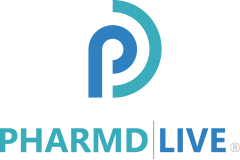By: Hannah Grice, PharmD
Adverse Drug Events
Room for error: In the elderly population, medications have gone from blessing to possible threat.
Prescriptions are being written liberally and scripts for the elderly are roughly 33% of the US total.
“One in six hospital admissions of older adults is because of an adverse drug event (ADE), a proportion that is four times that of younger persons.
For persons older than 75 years, hospital admissions because of an ADE increase even further to one in three.”
Prescribers today must take every precaution to slow down this trend.
Polypharmacy is most commonly defined as the use of five or more medications daily.
Polypharmacy is common among the elderly and the chronically ill and contributes significantly to ADEs.
Prevalence
Approximately 1.3 million patients visit emergency departments annually, due to adverse drug events (ADEs). 350,000 of those patients will need to be hospitalized.
Report serious ADEs to the FDA’s MedWatch program, to prevent future ADEs.1 ADEs cost the US approximately $1 billion annually, which is another reason to help prevent them.2
Prevention
We know there are ways to prevent Adverse Drug Events.
“Computerized physician orders, prescription entry, and bar-coding systems are excellent tools to prevent ADEs.”3
It is also apparent that the rate that ADEs occur increases exponentially when a patient is taking 4 or more medications.
It is important to consider deprescribing, but if not, to consider all drug-drug interactions.
Consider the various types of drug interactions.
Drugs can bind to one another in the GI tract, which can prevent absorption and reduce bioavailability.
For example, levothyroxine should be administered on an empty stomach, because calcium or iron-containing products can lead to reduced effects.
Second, drug inducers or inhibitors can affect drug metabolism and lead to side effects.
For example, amiodarone inhibits CYP3A4, which can potentially lead to toxic levels of fentanyl or alprazolam.
Last, drug interactions can occur due to their mechanism of action.
For example, both calcium channel blockers and beta blockers slow a patient’s heart rate and can lead to heart block when used concomitantly.
It is imperative to educate oneself about prescribing cascades.
“Prescribing cascades are a sequence of events that originate when an Adverse Drug Event occurs.”4
The prescriber mistakes the ADE for a new medical condition and prescribes a new medication to treat the ADE.
Although there are cases in which it may be appropriate to initiate a prescribing cascade, the prescriber must recognize the ADE and then must weigh the benefits and risks of treating the adverse event.
Pharmacists are medication experts, trained to excel at recognizing and preventing ADEs, one of the reasons that PharmD Live focuses on providing pharmacist-driven clinical solutions, like Chronic Care Management (CCM) and Remote Patient Monitoring (RPM).
ADEs can occur at any point in therapy, which makes ongoing follow-up and monitoring critical factors after the early detection of these issues.
Once ADEs are identified, clinical pharmacists can recommend treatment strategies that will allow the patient and physician to resolve the ADE and mitigate any harm to the patient.
Common Prescribing Cascades:
- Donepezil→ urinary incontinence→ solifenacin→ nausea/abdominal pain→ ondansetron
- Amlodipine→ peripheral edema→ furosemide→ hypokalemia→ potassium chloride→ GI discomfort→ pantoprazole
- Topiramate→ weight loss→ Megestrol→ DVT→ rivaroxaban→ bleeding
- Lisinopril→ cough→ dextromethorphan→ sedation→ caffeine/stimulant→ insomnia→ zolpidem
- diphenhydramine→ constipation→ PEG→ nausea/cramping→ pantoprazole→ C. diff→ metronidazole
Evaluate questions before prescribing a new medication:
- Has discontinuing or reducing the dose of medication been considered?
- Has one considered and/or tried all non-pharmacological options?
- Have the benefits and risks been weighed prior to initiating a new medication?
- Does the current treatment regimen or the one soon to be initiated line up with the patient’s treatment goals?
- Is the patient willing and able to attend follow-up appointments to monitor the efficacy and appropriateness of the new drug?
Additional tools to utilize to detect potentially inappropriate medications:
In conclusion, ADEs are a dangerous, persistent threat to those taking more than 4 medications.
The union of ‘elderly’ AND ‘chronically Ill’ is where most US drugs are prescribed, and most ADEs occur.
PharmD Live is working hard to reverse these trends.
Providing clinical pharmacists who gather complete patient information and perform medication management, PharmD Live manages at-risk patient populations and prevents ADEs, using AI-driven technology.
If you are medically concerned about your elderly population, we invite you to learn more at: www.pharmdlive.com/solutions/medication-therapy-management/
References:
- https://www.aafp.org/afp/2013/0301/p331.html
- Cdc.gov. 2020. ADEs In Adults | Medication Safety Program | CDC. [online] Available at: <https://www.cdc.gov/medicationsafety/adult_adversedrugevents.html#:~:text=Adverse%20drug%20events%20cause%20approximately,visits%20for%20adverse%20drug%20events.> [Accessed 18 September 2020].
- Sarah P Slight, Diane L Seger, Calvin Franz, Adrian Wong, David W Bates, The national cost of ADEs, resulting from inappropriate medication-related alert overrides in the United States, Journal of the American Medical Informatics Association, Volume 25, Issue 9, September 2018, Pages 1183–1188, https://doi.org/10.1093/jamia/ocy066
- Cdc.gov. 2020. ADEs In Adults | Medication Safety Program | CDC. [online] Available at: <https://www.cdc.gov/medicationsafety/adult_adversedrugevents.html#:~:text=Adverse%20drug%20events%20cause%20approximately,visits%20for%20adverse%20drug%20events.> [Accessed 18 September 2020].
- McCarthy LM, Visentin JD, Rochon PA. Assessing the Scope and Appropriateness of Prescribing Cascades. J Am Geriatr Soc. 2019;67(5):1023-1026. doi:10.1111/jgs.15800









3 Responses
Patient if at all possible should take their medication with them to the Emergency Department, or have a list in their wallets 24/7, like they do a credit card.
Thanks for your comment, Jean. We couldn’t agree more. Here at PharmD Live, our pharmacists work one-on-one with patients to help stop adverse drug events before they send someone to the emergency room or they are readmitted to the hospital. Did you know that adverse drug events are the fourth leading cause of death in the U.S.? If you would like to learn more about how to prevent adverse drug events, please follow us on Facebook and Instagram or we can send you our quarterly newsletter.
Great insights on medication therapy management! It’s so important for patients to understand how proper management can optimize their health outcomes. Your tips on effective communication between pharmacists and patients are particularly valuable. Looking forward to more posts that highlight the role of pharmacists in healthcare!